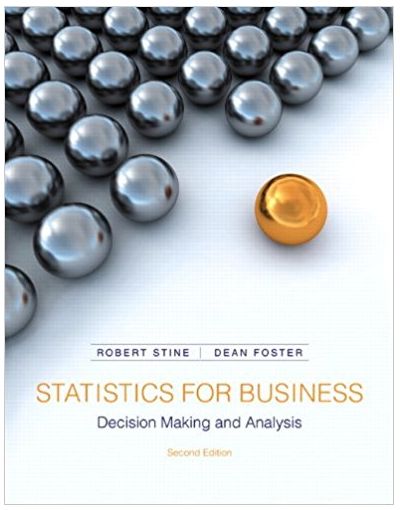1. The sample space S for this experiment has 10 elements. 2. The assumption of independence implies...
Question:
2. The assumption of independence implies that each shopper has the same probability for carrying a bag.
3. P (A) + P (B) = P (A or B).
4. The probability that both events B and C occur is equal to P (B).
5. The probability that a randomly chosen customer purchases with a credit card or spends more than $50 is the same as or larger than the probability that the customer purchases with a credit card and spends more than $50.
6. If each shopper has the same chance of making a purchase and shoppers behave independently of one another, then P (A and C) = P (A) × P (C).
A market research assistant watches the next five customers as they leave the store. He records whether the customer is carrying a store bag that indicates the customer made a purchase. He writes down a yes or a no for each. Define the events.
A = {first two shoppers have a bag}
B = {last two shoppers have a bag}
C = {last three shoppers have a bag}
Fantastic news! We've Found the answer you've been seeking!
Step by Step Answer:
Related Book For 

Statistics For Business Decision Making And Analysis
ISBN: 9780321890269
2nd Edition
Authors: Robert Stine, Dean Foster
Question Posted:





